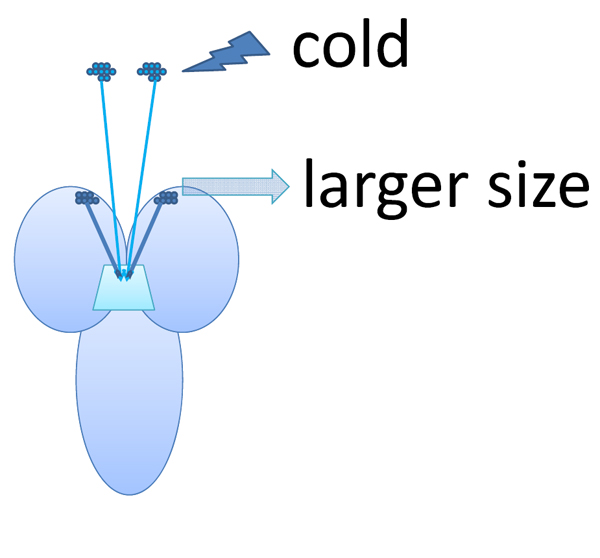On Dec 9th, 2015, the group led by Professor Zhefeng Gong published their findings on the cellular and molecular mechanism underlying cold induced growth in fruit fly in Nature Communications.
In 19th century, German biologist Carl Bergmann found that animal body size apt to be bigger in cooler climate, which is named the Bergmann’s Rule. Although this rule has long been accepted, the underlying cellular and molecular mechanism is largely unknown. Prof. Gong’s groups found that in larval fruit fly cold stimulation can stimulate insulin producing cells (IPCs) where fly insulins are produced, and enhance insulin’s RNA synthesis and protein secretion, before finally lead to larger pupal size. Furthermore, they found that the axonal termini of cold sensing neurons can directly target on the dendrites of IPCs and form synapses. By combining with calcium imaging, directly activating cold sensing neurons in an optogenetic manner can also stimulate IPCs, promotes the synthesis and secretion of fly insulins and increases larval size, just like the effects of cold stimulation. This study disclosed a neuronal signaling pathway that mediate the cold stimulation of insulin synthesis/secretion and animal growth, and provides a mechanistic explanation for Bergmann’s Rule at the level of neuronal circuit.
This work is supported by the 973 project of China Ministry of Science and Technology and the National Science Foundation of China.
